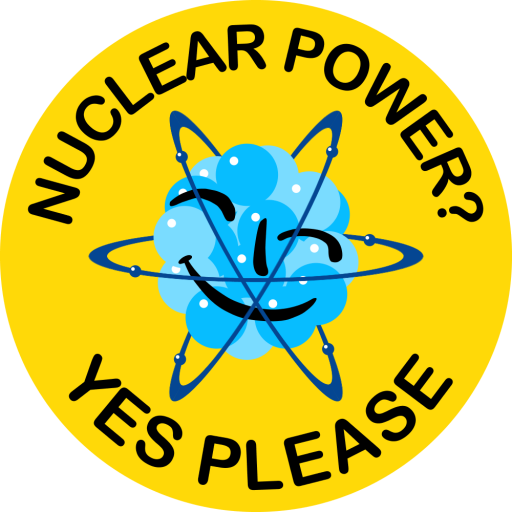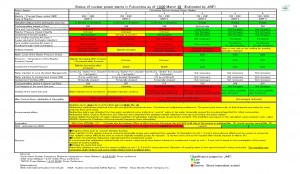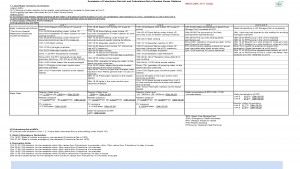Last updated on March 1, 2013
Update 12:00(CET)/10:00(UTC)/19:00(JST)
Yet another day and some more updates. JAIF has released an update that doesn’t show much news. The pressure in the pressure vessel of reactor number one has gone down slightly from 603 kPa to 583 kPa. The containment pressure is down from 285 to 245 kPa. Feed water nozzle temperature down from 323.3 to 290.5 degrees Celsius. I hope it will be a start of a downward trend.
The status for the other 2 reactors are about the same as yesterday and nothing new is happening with the spent fuel pools.
The work to pump away the junk water in the turbine hall of the number 1 reactor have come to a stop after they ran out of space in the turbine condenser where they where pumping the water. This is bad news since it further delays work to restore the internal coolant pumps, the number one reactor seems to be the least stable of the three so it would be nice to get the pumps running asap.
Still no clue to what caused the leakage of the highly radioactive water found in the number 2 reactor turbine hall and in the tunnel connected to the turbine building.
Levels of Iodine in sea water are still high with a new peak today.
IAEA reports on the contamination spread by the accident so far. The worst afflicted areas has surface contamination of I-131 of 23 kBq per square meter and 0.79 kBq per square meter of Cs-137. As comparison the effected areas after the Chernobyl accident had ground contamination from 40 kBq up to 1 500 kBq. So Fukushima is still many orders of magnitude less severe than Chernobyl. Here is a quote from the IAEA page.
On 28 March, deposition of iodine-131 was detected in 12 prefectures, and deposition of cesium-137 in 9 prefectures. The highest values were observed in the prefecture of Fukushima with 23 000 becquerel per square metre for iodine-131 and 790 becquerel per square metre for caesium-137. In the other prefectures where deposition of iodine-131 was reported, the range was from 1.8 to 280 becquerel per square metre. For caesium-137, the range was from 5.5 to 52 becquerel per square metre. In the Shinjyuku district of Tokyo, the daily deposition of both iodine-131 and cesium-137 was below 50 becquerel per square metre. No significant changes were reported in the 45 prefectures in gamma dose rates compared to yesterday.
The situation in Fukushima doesn’t change so rapidly anymore so it is likely that we will switch to updates on the situation only once a day after NISA releases their status update. If some important breaking news appear we will of course update that quicker.
Links(English)
Bloomberg TEPCO’s damaged reactors may take 30 years, 1.2 billion $ to scrap
Kyodo news Edano suggests scrapping all reactors att Fukushima Daiichi plant
BBC Japan to scrap stricken reactors
Reuters Japan orders safety upgrades at nuclear plants
Blogs on English
Next big future Theory of corrosion and backflow through feedwater lines to explain Fukushima radioactive water leaks
The nuclear green revolution Fukushima Dai-ichi: The good, the bad and the ugly
All Things Nuclear Lochbaum senate testimony on Japan crisis
NEI Nuclear Notes Lessons learned from Japan
Energy from Thorium Fukushima and the perception of risk
Links(Swedish)
SvD Hög nivå radioaktivitet i Japan
DN Reaktorerna kan kläs i tyg
Aftonbladet Skyhög nivå radioaktivt jod
UNT Kärnkraften är och förblir farlig
UNT Kärnkraft är inte ok
UNT Vadå långsiktigt hållbar lösning?
Swedish blog posts
Röda Malmö Ingen ände på kärnkraftseländet
Kommunisternas blog Vad är det som härskar på jorden
Viskningar och rop Röster om kärnkraft


